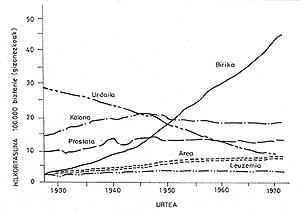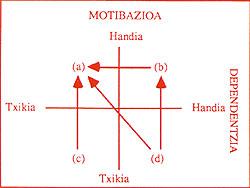Smoking (I). Tobacco and cancer
1988/04/01 Agirre, Jabier - Medikua eta OEEko kidea Iturria: Elhuyar aldizkaria
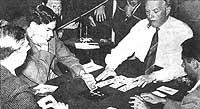
But it is more important than all these quantitative data to consider that it is possible to voluntarily exclude this negative effect from the person and society. The dream of cancerologists is that: if it were so in all cancers...
But the reality is very different. Although public education advances and offers positive results, there is still much to do.
To explain the topic, I will divide the information into four sections: first a historical vision will be given, h.d. From the time tobacco is known as cancer, Doll and Hill scientifically demonstrated art. In the second section, the current situation will be explained: What we know, what has been done and what has been achieved. In the third I will refer only to lung cancer, for its special relationship with tobacco. Finally, what is the planning of the fight against cancer in a short-term future?
Historical Vision Historical Vision
More than 200 years ago, the relationship between tobacco and the onset of cancer was first mentioned. However, in 1914 it was scientifically demonstrated that solid particles of tobacco smoke were capable of producing hydrocarbon cancer, h.d. with a carcinogenic character.
However, at the beginning of this century, the types of cancer that today are undoubtedly associated with tobacco, were accepted as very rare cancer and were rarely mentioned in death certificates. If tobacco users were to continue with the usual procedures and ways, tobacco use would never become fashionable, as it had never been fashionable in societies that knew tobacco. The facts that carried out this change were two:
- On the one hand, a new method was devised for the curing of tobacco leaves. And the result of this new method was red tobacco. Attractive for its colorful special, the general public accepted it immediately.
- On the other hand, industrial machining was the determining factor. In 1881 a 19-year-old engineering student invented a machine that until then was unthinkable to speed up a new product. He drew a thin roll of tobacco, wrapped in paper and of a certain length (the cigarette was born). These new machines began to work quickly and cigarettes multiplied more and more by affordable prices for the younger people.
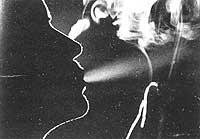
The tobacco industry, while increasing, also advanced scientific research into the carcinogenic power of tobacco. There were many studies of this type (especially those studying bronchial and lung cancer); 2. Especially after the World War. The possible relationship between the smoking habit and the appearance of this special type of cancer was increasingly evident, since smoking was growing since the first decades of the century, and, on the other hand, it was fair to think that the organ most affected by the inhalation of tobacco smoke was the lung.
In addition to lung and bronchial cancer, cancer of the mouth, esophagus, sand and bladder have been studied for their relationship with tobacco.
Current situation
The smoking control sessions can be very varied:
- Campaigns against tobacco. The reports made by very important entities, such as the WHO, which emphasize the consequences that tobacco has for health have been numerous, have allowed that in the majority of the industrialized countries, campaigns have been carried out against tobacco consumption, which are still being carried out. Smoking is today the most important thing that can be prevented in the factors of premature deaths in Western countries. The campaigns can be very varied: aimed at adults or especially young people and adolescents. They can only be informative (citing, for example, the relationship of tobacco with cancer). Those aimed at teenagers usually integrate into the school environment: talks, films, etc. with the aim of getting generations of non-smokers (it seems that in Sweden they are getting). Methods for quitting smoking. If the bibliography is analyzed, it is easy to observe that smoking cessation procedures are very different: acupuncture, hypnosis, controlled burning, social support, nicotine gum, relaxation exercises, self-control rules, psychotherapeutic groups, medical advice, etc. More and more smokers are thinking about quitting smoking and this has created more than one method of weeding and has awakened more empty words and illusion among many smokers. Special actions in companies and hospitals. A new strategy to make known the problem of smoking and helping smokers to give up their habits of life is that of the programs that are being applied for local smokers to abandon at the same time this inadequate practice in companies or hospitals of different localities. In the health field, the experience of physicians in Great Britain is mentioned as an example: information about tobacco was systematically disseminated, indicating the role they had as a model in society and the advice to follow to leave tobacco to their patients.
- Legislative measures. It seems that any planning that seriously poses the problem of smoking in any country needs legal measures next to it to be effective. In most Western countries, laws on tobacco use have been published in public places, contents of nicotine and tar, sale to minors and advertising on tobacco.
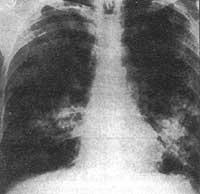
Currently there are controversies when evaluating the damage that non-smokers receive from what is known as willless smoking (or passive smoking). What is clear is that the inhalation of other people's smoke introduces nicotine into non-smokers, which is easily measurable.
As a result of all these activities, in most industrialized countries the number of smokers decreases. In the United States, for example, between 1964 and 1979, smokers decreased from 42% to 33% and in those 15 years they quit smoking about 30 million people. If you analyze who quit smoking, it was observed that white men were of high class or social class. While in 1978 10% of the doctors smoked, in the hand staff the smokers were 65%.
Among women smokers things are different (they are still around 30%). In Spain the situation is very different. At present it can be affirmed that 41% of the population is smoking, without there being a relationship between the aforementioned consumption and the social level. According to a study conducted in Catalonia, doctors and teachers are the ones who smoke the most.
Tobacco and lung cancer
At present, lung cancer is for man the first of all types of cancer (with significant difference) and its frequency increases in women. The frequency varies between 5 and 80 cases per 100,000 inhabitants for men and between 5 and 40 for women.
How can this spectacular boom be understood? Let's say, first of all, that it is not a false increase that has occurred in recent years due to the precariousness of the diagnosis, but a real brutal increase. In England, for example, mortality from this disease has increased from 0.5% to 6% between 1930 and 1980. And the worst thing is to continue climbing. When analyzing the causes of this phenomenon, all researchers agree to point out the importance of smoking cigarettes. All other factors would be synergistic, only auxiliary. And the statistics are terrible at this point: smokers of more than 25 cigarettes a day have 20 times more cancer risk than non-smokers.
We could say that today some 80,000 people die in the US for tobacco. Considering that in the 12 years of the Vietnam War (1961-73) only 46,000 soldiers were killed, it is easy to understand that tobacco is much more dangerous and lethal than any weapon.

Perhaps the best known of all the studies that study the relationship between tobacco/lung cancer is that carried out by Doll and Hill over 10 years with 40,000 controlled physicians. This study compared groups of smokers, non-smokers, who stopped smoking: their tobacco habits and the incidence of lung cancer were studied.
This study clearly shows that the increase in lung cancer is directly related to tobacco, being directly proportional to the number of cigarettes burned. On the other hand, it shows that among those who have been between 8 and 10 years without smoking (and, of course, among those who have already been smokers) their incidence of cancer is much lower than that of smokers.
At this point I would like to touch the problem of passive smokers. This is what is called the one who, being a non-smoker, devours against his will the smoke of tobacco consumed by other smokers of his environment. The most important part of this smoke comes from the so-called secondary current, h.d. the smoke that occurs when the cigar, the cigar or the pipe are burning by themselves (without the smoking aspiration). The current that arises when aspiring the smoker and that goes to the mouth for the cigarette is the main or primary current.
After analyzing the components of the secondary current, it has been observed that the concentration of certain toxic components is much higher than in the main current (nicotine and tar three times more, carbon monoxide 5 times more). On the other hand, it has been proven that the passive smoker in a tobacco smoke environment can ingest for an hour as many fumes as 2 or 3 cigarettes, depending on the smoke of the area and the ventilation of the place.
For the future, what?
As we are in the European Economic Association, in June 1985, we will mention the planning for the fight against cancer that was prepared at this level. (EUROPE AGAINST CANCER or called EUROESPERANZA). It proposes measures at all levels: internal market (special taxes, labels of cigarette boxes, measures to limit the sale, etc. ). ), agricultural (for example to reduce tobacco production), consumer advocacy (against passive smoking, advertising), etc.

Gai honi buruzko eduki gehiago
Elhuyarrek garatutako teknologia




